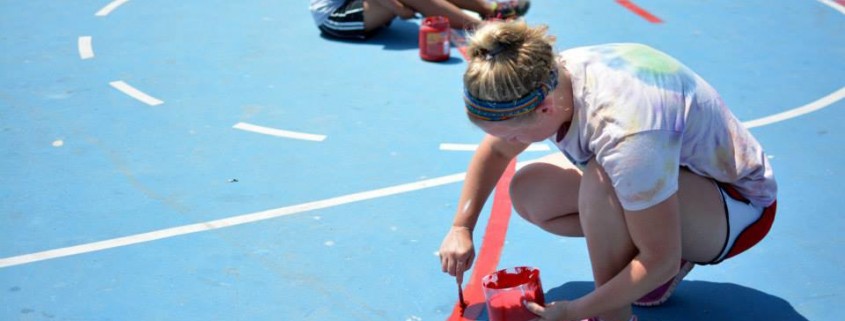Students dedicate spring break to service
USC’s Alternative Spring Break program hosted students, staff and faculty from March 14 to March 21 to complete domestic and international service learning trips organized by university academic departments and student organizations.
The Alternative Spring Break program is an opportunity for students, staff and faculty to engage in service learning in communities outside the Los Angeles area.
Navajo Nation, the longest-running ASB trip, provides students the opportunity to engage with community service and Navajo culture. Students tutor children at an elementary school, hike the Mesa Verde National Park in Mesa Verde, Colorado, and volunteer with local nonprofits, among other things.
Drew Lane, a sophomore majoring in international relations, spoke about his rewarding experience on the Navajo Nation trip.
“One day we went on a hike and sat with the high school students from the reservation and talked about their lives and their plans for the future,” Lane said. “A lot of them were so motivated, it was really amazing.”
Another trip in Baton Rouge, Louisiana, focused on youth and education. Students specifically had the opportunity to become acquainted with Teach for America, talk to a public official about education in Louisiana and partner with elementary school students in a mentorship program.
Pablo Pozas Guerra, a sophomore majoring in industrial and systems engineering, said that there is still a tangible gap between kids who are interested in attending college and others who still dream of professional athletic careers.
“So many of the kids I worked with showed an interest in going to college,” Pozas said. “I know when I was in sixth grade I did not show a similar interest. But you could see the other side of it, too. Some kids still had the dream of being NFL or NBA players. That disparity was really eye-opening.”
Lane also found that he learned from his experiences with teenagers in the Navajo Nation.
“I really learned to get to know people on a deeper level,” Lane said. “That can be so valuable in life.”
Pozas said he felt rewarded by the connection he made with both the USC students on the trip and the students he worked with in Baton Rouge.
“I really enjoyed being matched up with my buddies,” Pozas said. “They offered a lot of insight into their culture and situation. I understood their lives more than I thought I would. Hopefully I was a role model for them.”
Alternative Spring Break trips generally cost between $450 and $3,100 per person. The application period for alternative winter and spring break programs in the 2015-2016 school year will take place at the beginning of next fall semester.
In addition to their domestic trips, ASB offers international destinations in Guatemala, India, Mexico and Thailand. Other domestic trips also include Charlotte, North Carolina; San Francisco and San Jose, California; Orcas Island, Washington, and Baltimore, Maryland.
“I remember the morning we left, I was second-guessing my choice of going on an alternative spring break,” Pozas said. “I was really missing home and thought this might not have been the best choice for me at the time. In retrospect, this is the best thing I could have done with my spring break. To anyone who is thinking about doing an alternative spring break, do it.”

